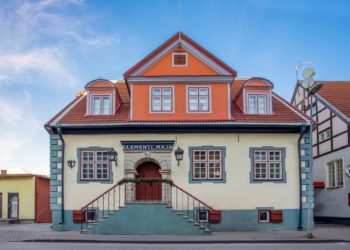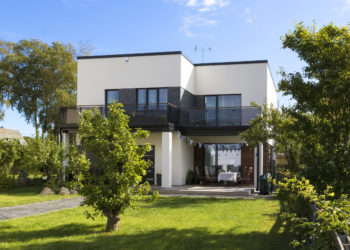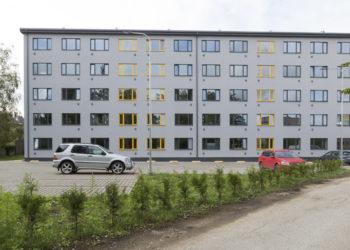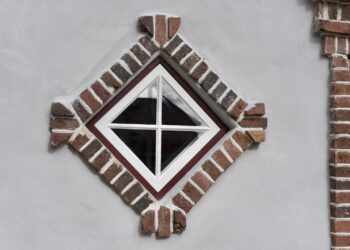Facade insulation and plastering
The following keywords are important for the facade insulation of a building: energy efficiency of the building, room temperature, air circulation, prevention of mold formation and condensation on cold bridges, interior surfaces, and structures.
Our thoughts about facade insulation
- It is important to find a complete solution for the facade insulation of the external walls of the building and regulating the air circulation. Attention must be paid to the insulation of the floor, walls and ceilings. The external partitions of the building must be sufficiently insulated and airtight. With a comprehensive solution it is possible to plan the stages of the insulation works of a building.
- The most sensible solution for insulating stone and concrete buildings is to use polystyrene plastic and facade wool, which is plastered after reinforcement. Polystyrene foam is the most common material because the price per square meter is cheaper. Since the foam is not breathable, there is a common misconception that it feels as if the house has been wrapped in plastic. In fact, the problem does not arise from airtight insulation material, but from the elimination of previous ventilation systems in older buildings. For example, slots in old windows are closed or replaced with plastic windows. Deciding whether polystyrene foam is suitable for the building must be made in cooperation with an expert who is knowledgeable in construction physics. Foam may not be a viable option for all building structures.
- It is believed that the humidity of poorly ventilated rooms is reduced by letting the water vapor escape through the wall. However, the walls of the building must be airtight. It is not possible to insulate the house with a ventilated wall structure, as it has no insulation effect. Excessive humidity in the building can only be regulated by proper ventilation (window slots,airing the rooms, fresh air valves, forced ventilation and heat recovery ventilation).
- Excessive moisture comes from people. One person can generate 2 kg of moisture, and in extreme situations up to 4.1 kg of moisture per day. Therefore, vapor barrier and ventilation are very important to remove this amount of moisture from the building.
- The airtightness of the building boundaries and major air leakage areas could be mapped prior to renovation and additional insulation works. External structures are affected not only by external humidity but also by the internal humidity of the building. The movement of moisture through the structures is natural, but it must not condense, but should leave the boundary as steam. Condensed water vapour can damage the walls. For example, larger problems can occur if the house has been recklessly insulated from the inside. High relative humidity levels create favourable conditions for mold and rot or dust mites.
- If water has accumulated in the partitions, it changes the properties of the insulation material: the thermal conductivity deteriorates, the volume change increases, the insulation starts to sink, more compounds are released from the material, and there is a risk of mold.
- We have often seen a mistake when the old silicate lining of a wooden house is covered with insulation materials. There is ventilation between the timber structure and the silicate lining, which is a large cold bridge and therefore the removal of the silicate lining is necessary to achieve energy efficiency.
- Problems can also arise from the choice of insulation layer thickness, as the condensation point can occur in an airless environment, which is likely to result in the formation of fungi in building structures.
What do we offer?
- Facade insulation (polystyrene foam and facade wool)
- Facade painting
- Facade plastering
- Spray plastering of facades
- Renovation of facades
- Renovation of facades under heritage protection
- We also perform thermography examinations (thermal imaging) with an infrared camera to find heat leaks and conduct an energy audit to find the best possible solution.
- Our team consists of competent and qualified employees in the field of construction.
- We help with the technical conditions, permits and approvals required to obtain a final building authorization.
- We offer Construction All Risk insurance for the construction period, which also extends to the warranty period. In addition we have Liability Insurance in case of negligence or accidents.
- We promise that we will do our best to ensure that the construction runs smoothly and leads to best results.
Comprehensive construction service
Since the very beginning of our company we have set out to offer our customers a comprehensive construction service.
This means that we attend to the client’s concerns or wishes in full – we involve the necessary specialists and organize the documentation required by law. In doing this, we hope to save the customer’s time, money and give them peace of mind.
- Consistent cooperation with one company throughout the process
- Thorough price calculation for construction works
- Experienced builders and involvement of specialists of their field if necessary
- Constructive engineering, i.e. drawing the solutions needed for construction works
- Comprehensive and compliant documentation
- Applying for the necessary permits and approvals
- 36 months of warranty for our construction.





































